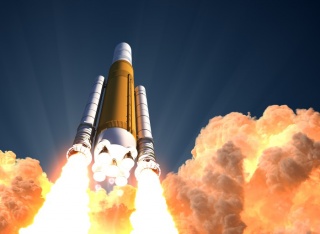Nano Tungsten Carbide: the Main Catalyst of the Rocket
21.06.2019.Liquid oxygen-kerosene is a typical hydrocarbon propellant. In the type of propellant of a rocket, whether liquid oxygen or liquid hydrogen or hydrazine, they cannot be separated from an important material -- a catalyst. Nano tungsten carbide is a kind of catalyst material with high performance, low cost and most promising to replace platinum.
The engine of a car, an airplane, or a ship needs not only fuel but also oxygen to helping to combust. The launch vehicle would have to be much faster than an airplane to overcome gravity to get into space, and the efficiency of fuel work would have to be very high. It also has to work at very high altitudes, even in outer space, so there's not enough oxygen in the atmosphere. Therefore, the rocket has to carry an oxidizer and a catalyst in addition to the fuel.
Liquid oxygen-kerosene is a typical hydrocarbon propellant and is the main rocket fuel studied in recent years. Compared with liquid hydrogen fuel, the disadvantage of liquid oxygen-kerosene is relatively low specific washing and regenerative cooling capacity and easy carbon deposition and coking. However, the combination of liquid oxygen/hydrocarbon propellant has many advantages, such as wide source, low cost, high combination density, high specific impulse performance, non-toxic, environmental protection and good storage resistance. It is understood that the efficiency of using liquid oxygen-kerosene is 15-20% higher than that of liquid hydrogen, which can greatly reduce the fuel carrying and the weight and volume of the rocket. Besides that, the price of kerosene is lower, saving more than 1 million dollars per launch. Unlike previous rocket engines that produced highly toxic pollution, neither kerosene nor liquid oxygen is toxic, and only water and carbon dioxide are produced during combustion.
The space industry has always used platinum metal as catalysts, which is not only expensive but also toxic in the process of catalysis. However, the development of nanometer technology has opened up new application fields for many materials, among which tungsten carbide is the best one. The presence of carbon in nano tungsten carbide not only alters the electronic properties of the surface of tungsten, giving it properties similar to platinum but also prevents the generation of toxic by-products.
It was found that the catalytic activity of tungsten carbide on the surface of pure tungsten carbide was mainly reflected in the reaction of carbon chain fracture, and the conversion rate of catalytic active reactants increased with the increase of reaction temperature. When the oxygen is introduced, the catalytic activity of tungsten carbide decreases, but its selectivity to the isomerization of reactant increases. At this time, isomerization is the main reaction, which indicates that tungsten carbide also has a good catalytic effect on liquid oxygen-kerosene, and it's surface composition has a direct influence on its catalytic activity and selectivity, and it needs to be doped with other elements appropriately to enhance the effect. In conclusion, as the most active transition metal carbides, tungsten carbide has Pt-like characteristics in the isomerization of catalytic hydrocarbons.
Please visit http://www.samaterials.com for more information.
Oznake: Tungsten Carbide, Nano Tungsten Carbide
komentiraj (0) * ispiši * #

